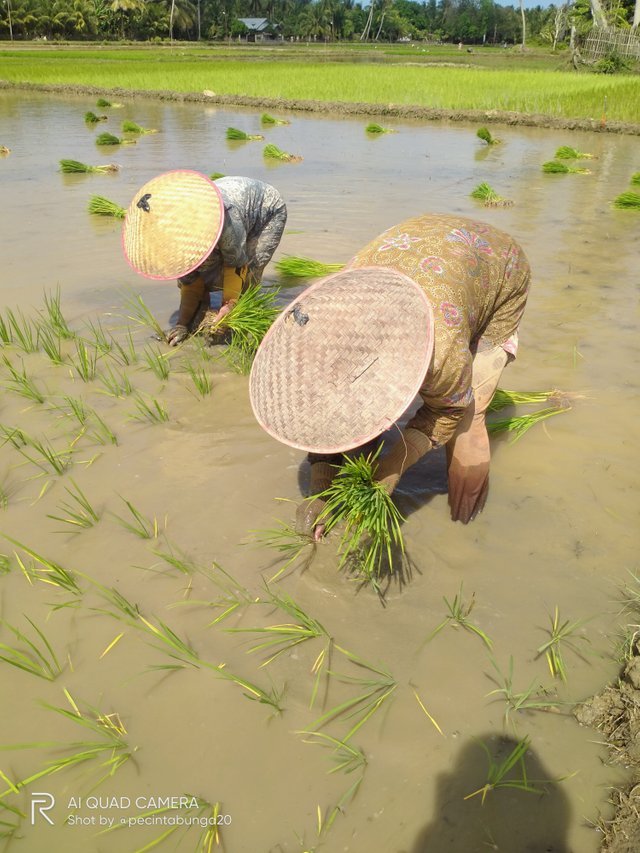
| What is the method of rice seedbed preparation and what steps are taken in preparing the soil for rice cultivation? |
|---|
Land is one of the first steps in planting rice, make sure the land that will be used to plant rice is fertile enough and has enough water, prepare the land and make beds approximately according to how many rice seeds we will plant.
And to plant rice seedlings, the fine soil is processed by hoeing or plowing with a tractor until the soil is fine and loose until there are no lumps of soil. Usually in our place even though it has been plowed with a tractor we will also hoe again so that the soil is smooth without lumps of soil.
After the beds are made and the soil has been processed finely, then make several plots
with a ditch in the middle so that you can plant seeds and regulate water easily and also so that when the rice grows long it can be easily pulled out.
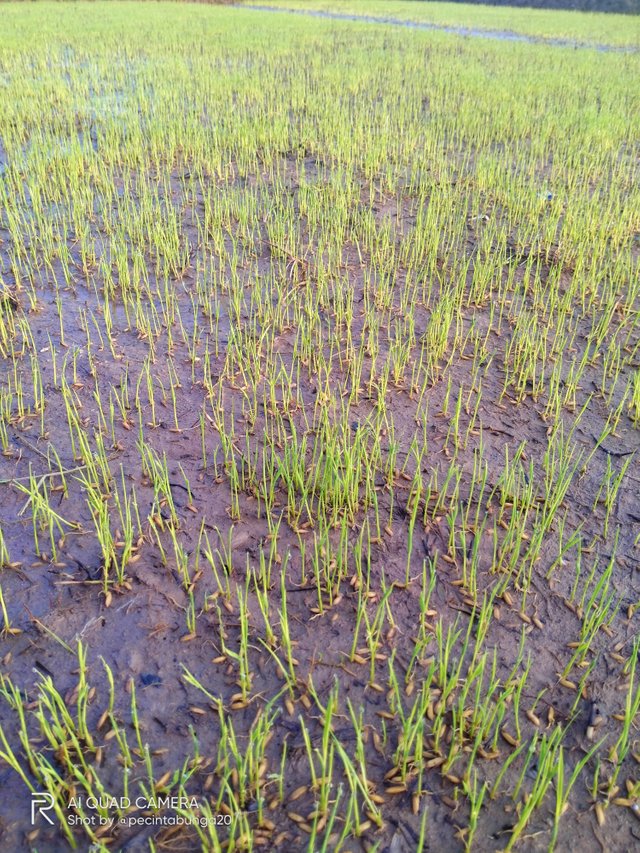
For the first rice seeding step, we choose rice seeds that we think are of good quality because good quality seeds are very important to increase the harvest.
First, soak the rice seeds in a sack for one day and one night, then lift and drain, then soak the rice seeds for three days and three nights, then cover the rice seeds with something on top because the seeds will grow in hot temperatures or usually the mother presses them by placing wood on top of the rice seed sack that is being soaked so that the rice seeds germinate quickly.

After three days of seeing the seeds have germinated, we sow the rice seeds into a mat or whatever to separate the piled up rice seeds or we can also separate them in the sack without sprinkling them out, it's up to each of us so that it is easy to spread during sowing.
The method of sowing is very easy
after the beds are ready with how much soil we make, we don't need to plant it too deep, just sprinkle the rice seeds evenly throughout the plot of land that we have made and the rice seeds will grow by themselves.
| What is the importance of planting rice seeds at the right time? |
|---|
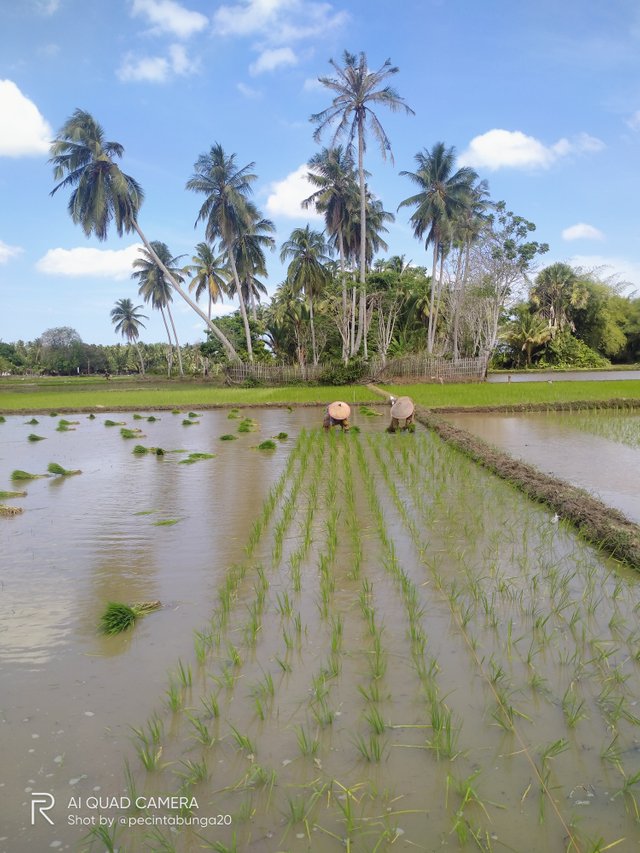
Planting rice seedlings on time is very important so that the seedlings adapt more quickly to the new environment,rice seedlings are pulled out when they are 17-20 days old after sowing, then the seedlings can be pulled out and moved to a wider area.
For gardening and try to make the land that we will plant rice close together so that the transfer can be done easily and quickly, so that the rice seedlings also remain fresh.
per plant root spreads faster and roots are deeper, plants will grow quickly because nutrients are perfectly absorbed by good roots.
Plants will grow quickly because nutrients are perfectly absorbed by good roots.
Planting rice seeds on time can increase the number of shoots so that by planting seedlings on time, the range for increasing active shoots is longer and optimal.
Accelerate the harvest period, by planting rice seeds on time, the rice plants will enter the harvest period faster.
| How is regular irrigation and fertilizer applied after sowing rice seeds? |
|---|
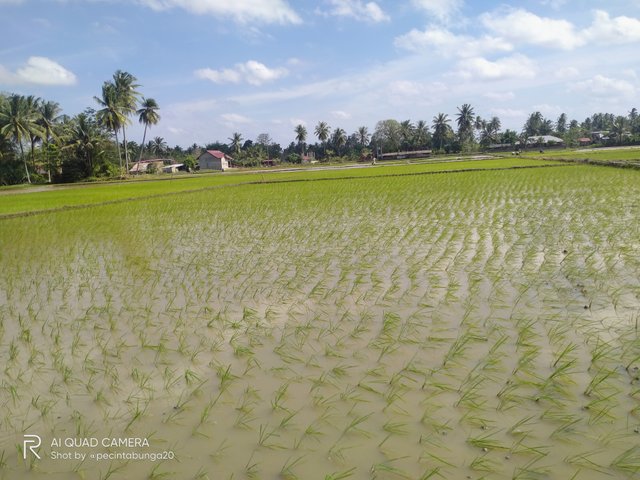
Water is one of the important elements in the growth of various plants, just like rice plants, irrigation must be maintained so that the plants remain in good condition so that the plants grow optimally.
Irrigation needs to be handled properly, when the plants need water and when the plants do not need water, such as when we first sow rice seeds for the first time we don't need a lot of water, we only need a little water to moisten them.
When rice is planted, a lot of water is needed to cover the entire land. Too much water in the planting medium will cause the planting medium to become muddy.
Fertilization
Fertilization is one way to produce an optimal harvest, so we must know when rice plants need nutrients from fertilizer, if it is not right then it will make the harvest less than optimal.
fertilization after the seeds are sown is done a week 7-10 after the rice is sown, for a week, then we sprinkle enough fertilizer so that the rice plants grow well and become fertile and green.
fertilization after planting is also done after one week after the rice is planted, the fertilizers needed are sp36 fertilizer, urea fertilizer and HCL fertilizer.
The second fertilization is given when the rice plants are around 21-30 days old after the rice is planted, using urea fertilizer
The third fertilization is given when the rice is around 42-60 days old after planting using urea and KCL fertilizers.
And the right time to fertilize is in the morning or evening, in the morning between eight and ten in the morning, and in the afternoon between four or five in the afternoon, avoid giving fertilizer during the rainy season.
| What are the major pests and diseases of rice crops, and how can they be controlled? |
|---|
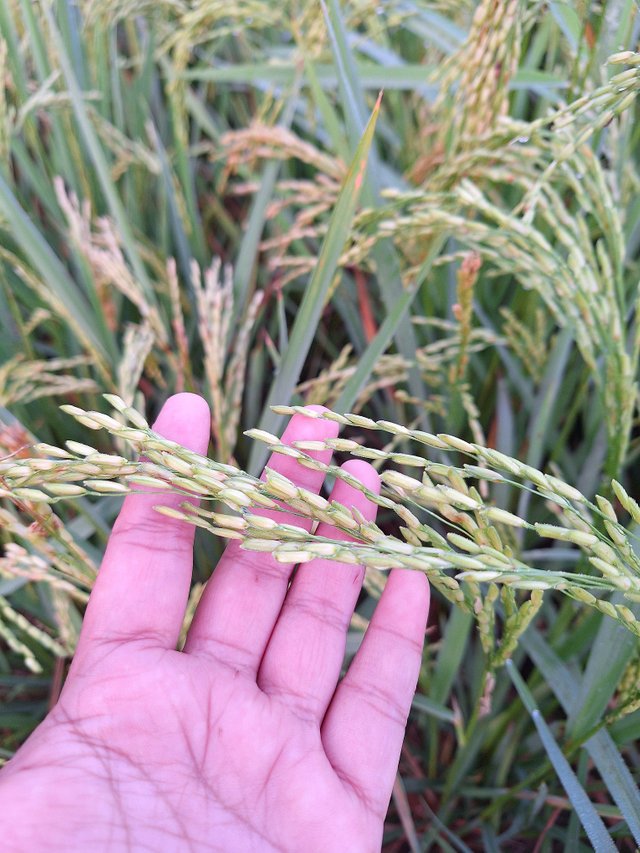
Cultivation of various plants will certainly not be free from the threat of diseases and pests that often attack, as well as rice plants and here are some diseases of rice plants that often attack.
Leaf spot is one of the diseases that attacks when rice seeds have just germinated, this fungal attack can make rice dry and rot until it dies.
Leaf sheath rot this disease attacks leaves and stems that have formed shoots which reduce yields.
Fusarium disease that causes rice seeds to turn brown, droop and eventually rot.
Pests that attack
The first annoying pest is snails that must be watched out for during the rice seedling process, these snail pests are very disturbing because they grate plants to eat, the way to get rid of this pest is by poisoning or by moving it to another place.
Rats are also a major threat to rice crop failure, rats always attack rice at night.
Wareng is a type of pest that sucks rice fluids which can cause viruses to spread to rice plants.
Stingless lice are pests that threaten rice plants to become dry, wrinkled and brown.
And the last is the most severe pest is the bird that will eat rice plants when they are bearing fruit and old before harvest, usually birds attack very badly in the morning.
When the rice begins to be harvested from morning, afternoon and evening we are very busy guarding it, usually we make attributes like people in the middle of the rice field to chase away birds that stop by, but that alone is not enough to scare the birds.
We also make cans filled with stones when the birds stand in the middle of the rice field we pull the rope and the can makes a sound to make the birds go away.
Even though it is only a small hut in the middle of the rice field or on the edge of the rice field to guard the birds that stop by to eat the rice, it is the final point of an exciting war when the rice planting season arrives, where we have to fight with naughty birds who shout until the sound of their voices is almost lost.
How to control pests and diseases
Pests are always a major threat to farmers, not only rice plants but also other plants. Farmers do various ways to eradicate very naughty pests in various ways, both traditionally and by spraying using insecticides that are appropriate for the type of pest that attacks.
| What are the next steps after harvesting the paddy and what are the steps to be taken to preserve the paddy? |
|---|
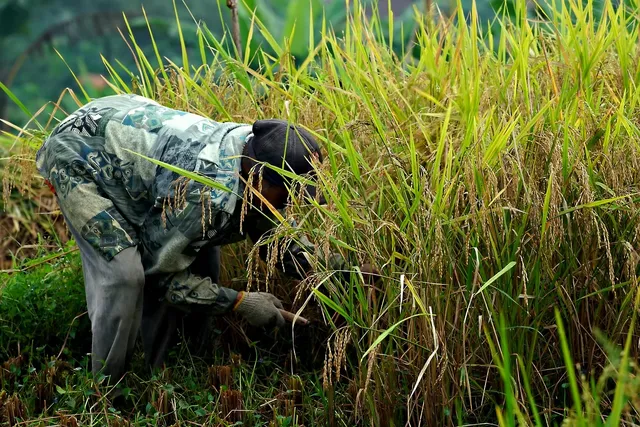
pixabay"
Usually the harvest is done when the rice is 3 months old or the harvest can be seen from other characteristics with signs of rice that has turned yellow and bent. The harvest method can be done in the traditional way, namely by cutting by hand using a sickle, now that the era is increasingly sophisticated, many have harvested rice using rice cutting machines.
It all depends on each of us, but if it is harvested by cutting with a sickle, of course this can help the village economy because it can generate wages from the salary of cutting rice with a sickle.
In order for agricultural products to last a long time, usually after harvesting we dry all the rice in the yard for about 1-2 days if the sun is hot, the drying time must also be considered because if it is dried too long, when it is milled into rice, a lot of it will be destroyed.
After being harvested and dried, we usually store all the rice stock in the warehouse and mill it gradually for daily consumption.
I myself am a farmer's child and I often help my family when the rice planting season arrives, so I have a little experience to share, , hopefully useful and thank you for those who have visited and read it, I invite friends to join the contest
@ola2006 @rumaisha @maulina92






Upvoted. Thank You for sending some of your rewards to @null. It will make Steem stronger.
Penyelesan yang sangat bagus kawan, baik daribsegi penyemaian benih padi hingga perawatan dengan tata cara pemumukan baik pun mengenai hama yang menyerang akan tanaman padi, saya rasa apa yang anda uraikan dengan beberapa pertanyaan membuat orang akan memahaminya,
Memang hama tikus dan burung pipit membuat petani kewalahan, sampai saat ini hama tikus sangat susah di kendalikan, hama tikus biasanya beroperasi pada malam hari bila hujan tikus akan sangat bersemangat untuk merusak tanaman.
Anda benar kawan, sistem perairan dengan air kesawah akan membuat padi tumbuh dengan optinal,
Terimakasih kawan atas postingan menarik yang anda bagikan semoga sukses.
Terimakasih banyak pak telah meniggalkan komentar anda yang berharga disini.
Saya berharap anda juga selalu sukses.
Langsung turun tangan ke sawah ya kak putri😁, Semoga berhasil, sehat selalu kakaku🥰🥰
Ya dek paling seru detik detik terakhir panen tiba, ketika harus berkelahi bersama tulo kloe🤣🤣
Thank you.
Thank you for sharing your detailed insights on rice cultivation! 🌾 It's great to see how you prepare the land, choose quality seeds, and manage irrigation and fertilization. Your tips on timely planting and dealing with pests are really helpful. I love how you emphasize the importance of drying and storing the rice properly after harvest to maintain its quality. 🌞 It sounds like you have a lot of valuable experience from helping your family. Keep up the great work, and I hope your future harvests are plentiful! 🌟
Saya mempunyai sedikit pengalaman saja karna orang tua saya petani.
Terimakasih banyak atas komentarnya, sehat dan sukses terus untukmu.
Oh that nice.Thank you!
TEAM 5
Thank you for the support.